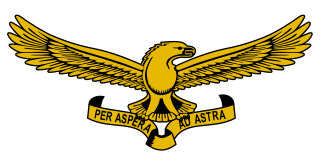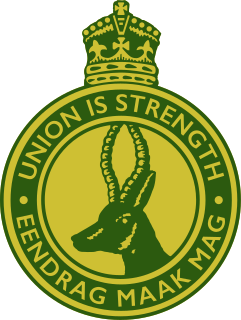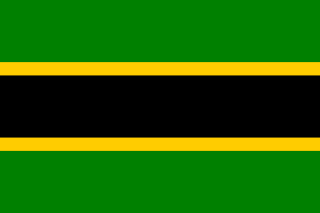
The Manchester Regiment was a line infantry regiment of the British Army in existence from 1881 until 1958. The regiment was created during the 1881 Childers Reforms by the amalgamation of the 63rd Regiment of Foot and the 96th Regiment of Foot as the 1st and 2nd battalions; the 6th Royal Lancashire Militia became the 3rd (Reserve) and 4th battalions and the Volunteer battalions became the 5th, 6th, 7th, 8th, 9th and 10th battalions.
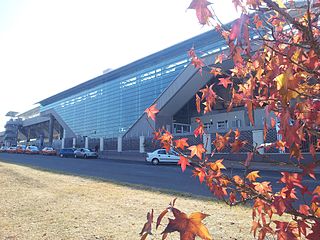
Centurion is an area with 236,580 (2011 Census) inhabitants in Gauteng Province of South Africa, located between Pretoria and Midrand (Johannesburg). Formerly an independent municipality, with its own town council, it has formed part of the City of Tshwane Metropolitan Municipality since 2000. Its heart is located at the intersection of the N1 and N14 freeways. The R21 also passes through Centurion.

Brigadier General Clement Leslie Smith, was a British Army officer and a recipient of the Victoria Cross, the highest award for gallantry in the face of the enemy that can be awarded to British and Commonwealth forces.
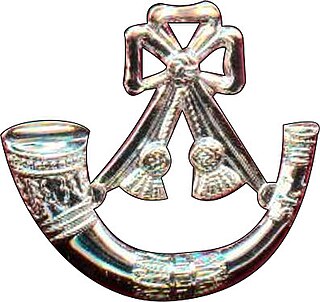
The Somerset and Cornwall Light Infantry (SCLI) was a light infantry regiment of the British Army. It was formed in October 1959 by the merger of the Somerset Light Infantry and the Duke of Cornwall's Light Infantry, and was itself merged with three other regiments of the Light Infantry Brigade in 1968 to form The Light Infantry.

The Cape Town Rifles is an infantry regiment of the South African Army. As a reserve unit, it has a status roughly equivalent to that of a British Army Reserve or United States Army National Guard unit.

The Light Horse Regiment (LHR), formerly the Imperial Light Horse (ILH), is an armoured car reconnaissance unit of the South African Army. As a reserve unit, it has a status roughly equivalent to that of a British Army Reserve or United States Army National Guard unit. It is part of the South African Army Armour Formation and is based at Mount Collins in Sandton, Johannesburg.
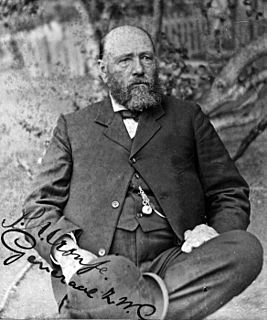
The Battle of Magersfontein was fought on 11 December 1899, at Magersfontein near Kimberley, South Africa, on the borders of the Cape Colony and the independent republic of the Orange Free State. British forces under Lieutenant General Lord Methuen were advancing north along the railway line from the Cape in order to relieve the Siege of Kimberley, but their path was blocked at Magersfontein by a Boer force that was entrenched in the surrounding hills. The British had already fought a series of battles with the Boers, most recently at Modder River, where the advance was temporarily halted.

The 43rd (Wessex) Infantry Division was an infantry division of the British Army. The division served with distinction in the Second World War on the Western Front from June 1944 until May 1945, suffering heavy casualties but gaining an excellent reputation and was known to the Germans as the Yellow Devils.

The Battle of Elandslaagte was a battle of the Second Boer War, and one of the few clear-cut tactical victories won by the British during the conflict. However, the British force retreated afterwards, throwing away their advantage.
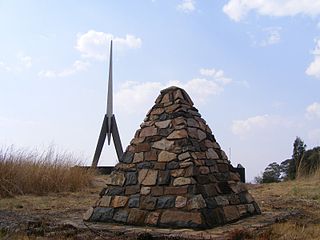
The Battle of Berg-en-dal took place in South Africa during the Second Anglo-Boer War.

The King's Own Yorkshire Light Infantry (KOYLI) was a light infantry regiment of the British Army. It officially existed from 1881 to 1968, but its predecessors go back to 1755. In 1968, the regiment was amalgamated with the Somerset and Cornwall Light Infantry, the King's Shropshire Light Infantry and the Durham Light Infantry to form The Light Infantry, which in turn was merged with the Devonshire and Dorset Regiment, the Royal Gloucestershire, Berkshire and Wiltshire Regiment and the Royal Green Jackets to become The Rifles in 2007.

The Cape Garrison Artillery (CGA) is a reserve force regiment of the South African Army Air Defence Artillery Formation. There have been two regiments of the name: one a coast artillery regiment, the other an anti-aircraft regiment. As a reserve unit, it has a status roughly equivalent to that of a British Army Reserve or United States Army National Guard unit.

The Royal Sussex Regiment was a line infantry regiment of the British Army that was in existence from 1881 to 1966. The regiment was formed in 1881 as part of the Childers Reforms by the amalgamation of the 35th Regiment of Foot and the 107th Regiment of Foot. The regiment saw service in the Second Boer War, and both World War I and World War II.

The Wiltshire Regiment was a line infantry regiment of the British Army, formed in 1881 under the Childers Reforms by the amalgamation of the 62nd (Wiltshire) Regiment of Foot and the 99th Duke of Edinburgh's (Lanarkshire) Regiment of Foot.

The Battle of Diamond Hill (Donkerhoek) was an engagement of the Second Boer War that took place on 11 and 12 June 1900 in central Transvaal.

The Loyal Regiment was a line infantry regiment of the British Army that was in existence from 1881 to 1970. In 1970, the regiment was amalgamated with the Lancashire Regiment to form the Queen's Lancashire Regiment which was, in 2006, amalgamated with the King's Own Royal Border Regiment and the King's Regiment to form the Duke of Lancaster Regiment.
Marshall's Horse was a South African cavalry unit formed in 1899 at the start of the Second Boer War to provide military support for the British campaign. The unit was created from the Uitenhage and Grahamstown Volunteers. They formed in Grahamstown, initially comprising 244 members before rising to 500 in late 1899. The unit's commanding officer was Major George Marshall CMG.

The South Australian Mounted Rifles (SAMR) was a mounted infantry unit of the Colony of South Australia that served in the Second Boer War. The first contingent of South Australian Mounted Rifles was raised in 1899, followed by a second contingent in 1900.







